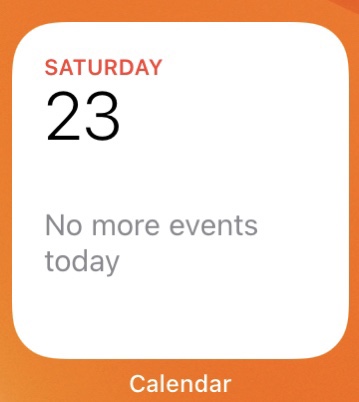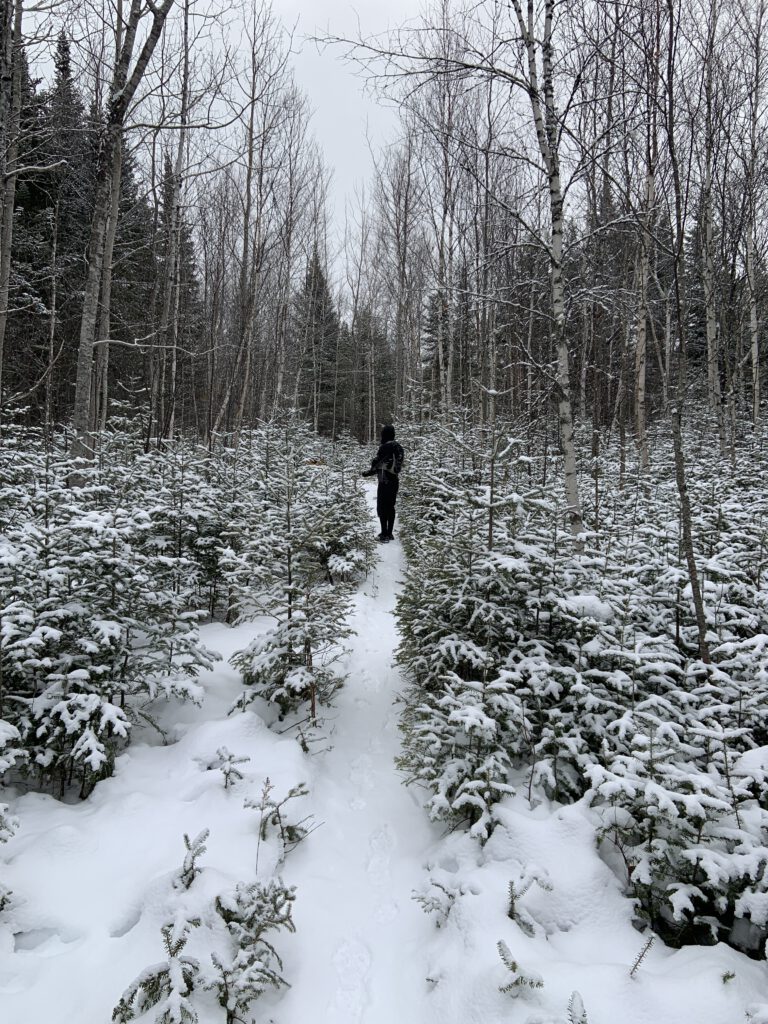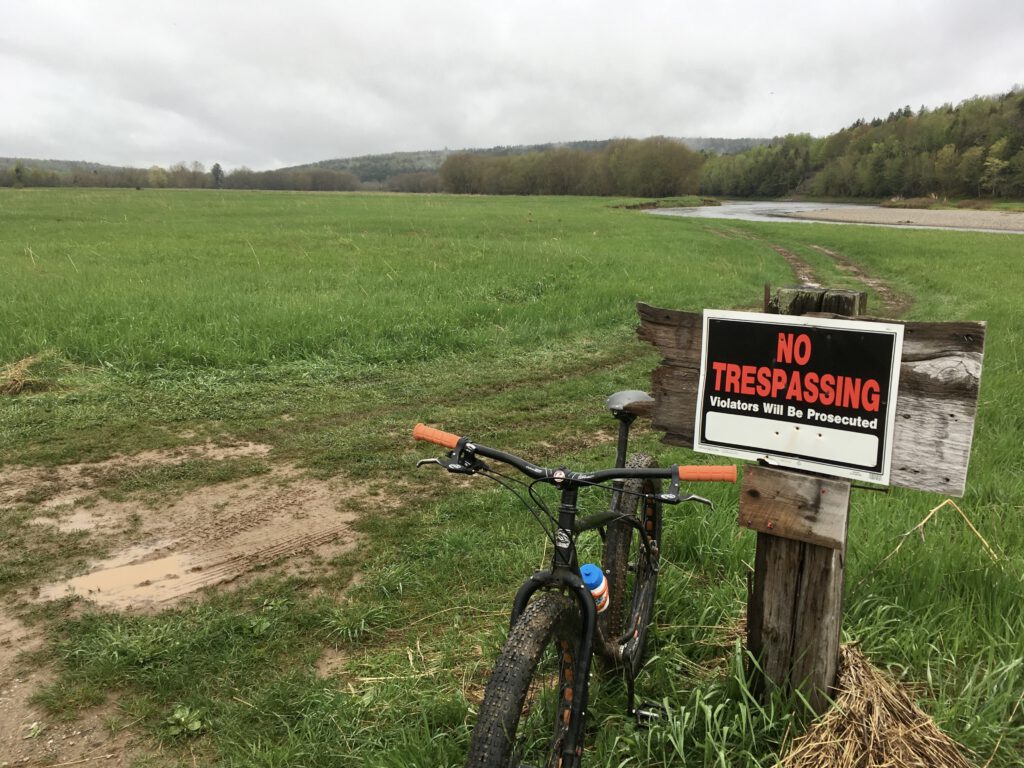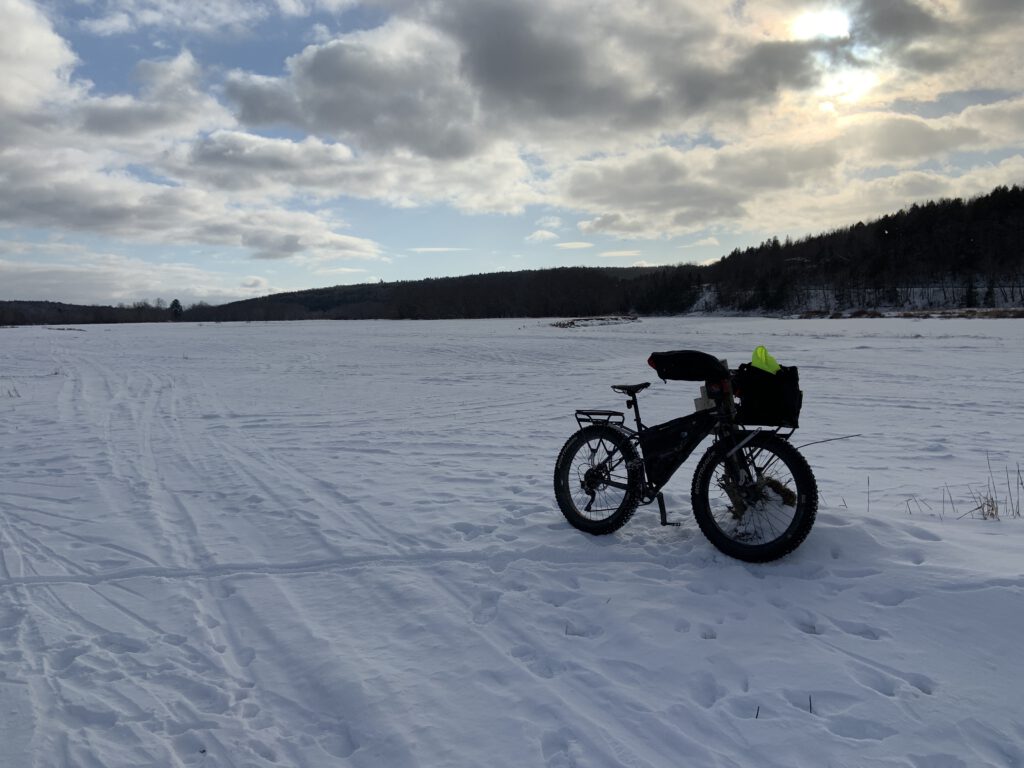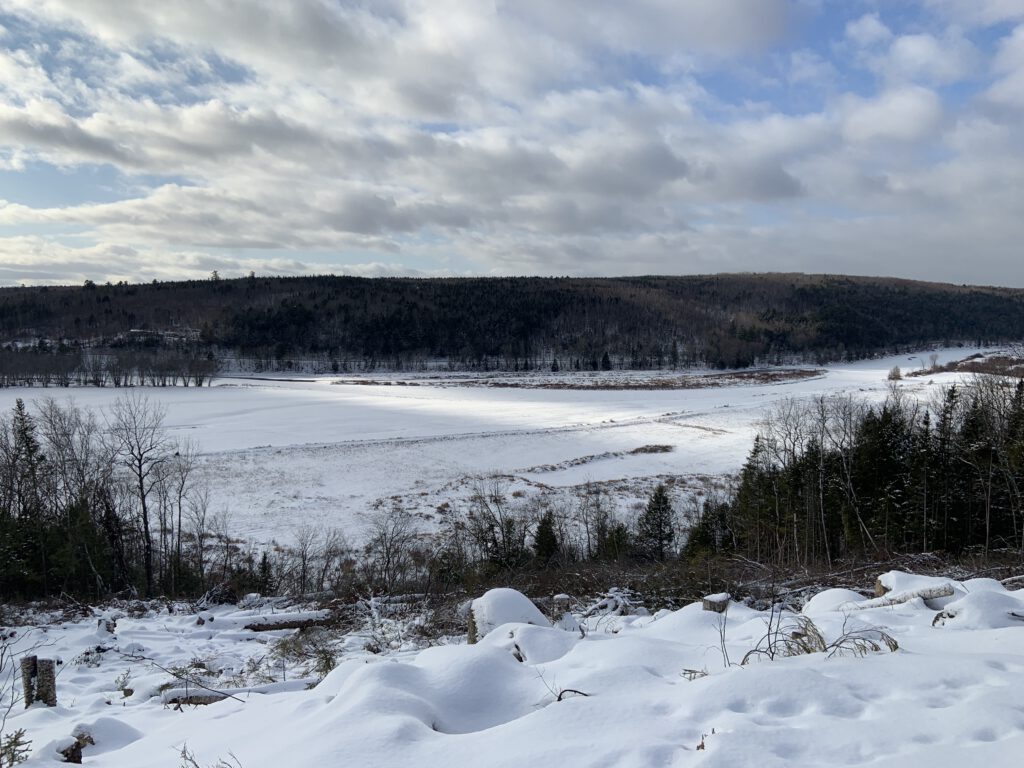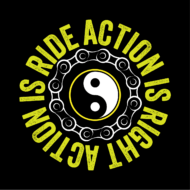Theres a 90+ acre area of river flats about a 10 minute walk from my house. It’s land that is for all intents and purposes uninhabitable – it floods every spring. There’s a road on it and nice access to the Nashwaak River. There are fields on it where hay was harvested. For over 10 years I’ve walked with my dog and ridden my bike down there in every kind of weather. Waded in the river in the summer’s heat and snowshoed across several feet of snow in the winter. I know I haven’t been the only one, I’ve seen lots of locals down there from time to time. Most, like me, respectful of the fact they were on someone else’s land, but some people not so much.
It recently changed owners and when it was up for sale I walked down there and would fantasize about turning into some sort of ‘park’. A place where people could walk, bring their pets, get close to the river and nature. The new owner intends to put cattle on the property and as such they are fencing it all off and the ‘No Trespassing’ and ‘Keep Out’ signs have gone up. They are completely within their rights to do so – I have no complaint with them – but I’m disappointed I won’t be able to go down there any more.
I thought of all this reading an article by Lucy Jones, Pathways in the Urban Wild.
Studies suggest that when people spend over twenty minutes in “urban nature,” levels of two physiological biomarkers of stress—salivary cortisol and alpha-amylase—drop.
…If it’s been raining, and I can smell petrichor—that metallic, ferric scent of the earth after it’s rained—then brainwave activity linked to calmness and relaxation may be triggered. Listening to birdsong rebalances my nervous system. Watching the daisies move in the wind soothes mental fatigue.
…Then, there’re fractals. Fractals are abundant in the living world. From ferns to lightning, salt flats to ocean waves, and, for the purpose of my urban nature safari, plants and trees and sprays of “weeds” that peep through the cracks in the pavement. The deep-green leaves on these plants are fractal, meaning a self-repeating pattern of a shape that varies in scale, rather than being repeated exactly. Once you know what fractals are, you’ll see them everywhere.
Richard Taylor, Professor at the University of Oregon, discovered that patterns with a fractal dimension of 1.3 (most fractals in nature fall between the 1.3 and 1.5 interval) provoked brain waves suggesting a relaxed but focused state. It turns out that the retinal vessels in our eyes are fractal, so when they view a fractal shape, our eye locks into place, so to speak. Taylor called this “physiological resonance.” We often forget that humans spent 99 percent of our evolutionary history in contact with the natural world, and there may be a genetic disposition within us to prefer fractal shapes, like Savannah-type shaped trees such as acacias, as well as landscapes with prospect and refuge and water sources. When it feels relaxing to look at these sprays of weed in the cracks in the pavement, it’s partly a response to an inherent genetic memory.
On the news this morning there were discussions around the rise in calls to doctors, therapists and associations for mental health assistance since the start of Covid-19. This should come as a surprise to absolutely no one. I myself have come to the conclusion that the best thing anyone can do in these uncertain times is to keep themselves as physically AND mentally fit as is possible given the circumstances.
People living on the sharp end of nature deprivation are not given fair opportunities for stress recovery, restoration, and relief from mental fatigue that connection with the living world offers. The way land is owned and controlled is connected to who is allowed to feel the deep joy and calm of being with wild things.
…I experienced this recently while paddling and swimming in one of our favorite nearby rivers. It was a scorching hot day, and we’d taken a net out to look at minnows and admire the banks, sequined with turquoise damselflies and cellophane-winged dragonflies. I was hoping to see one of my favorite emergences: pearlescent mayflies on their one day of life on earth. We walked to a stretch of river I’m attached to, spotting swallows and hearing the sound of the cuckoo on our way. Swimming in this bend of river became an essential place of healing for me during periods of postnatal depression over the last few years. Alongside clinical help, being in the cold water, among the poplars and kingfishers, was sometimes the only thing that could ease some of the psychic and hormonal storm.
While we were sitting on the banks, an angler arrived and told us we couldn’t be there, that the river was “private fishing land,” leased to a local anglers’ society, and we were forbidden from being in it or on the riverbanks. The bailiff might be around, and he had a dog, he said.
Later, I confirmed that this river, the main river in my town which stretches out into the countryside, is indeed leased to a private fishing club (fewer than 80 people), so the townspeople (110,000) are not allowed, legally, into it. I’ve been back once, but I stood still at the water’s edge: held back by a feeling of shame and the discomfort of being in a place that is not meant for you.
I have plenty of other places I can go for walks and ride my bike – literally stepping right out my door. I will not want for lack of places to seek some physiological resonance.
Where I live is already decidedly more rural than Ms. Jones’ locale but her article has reminded me of something I’m always trying to keep within reaching distance of my day-to-day experience, and that is there are a lot of people that simply don’t have access to ‘the Outside’ in the way I do and can’t access it with the ease that I can and I remain extremely grateful for that.
